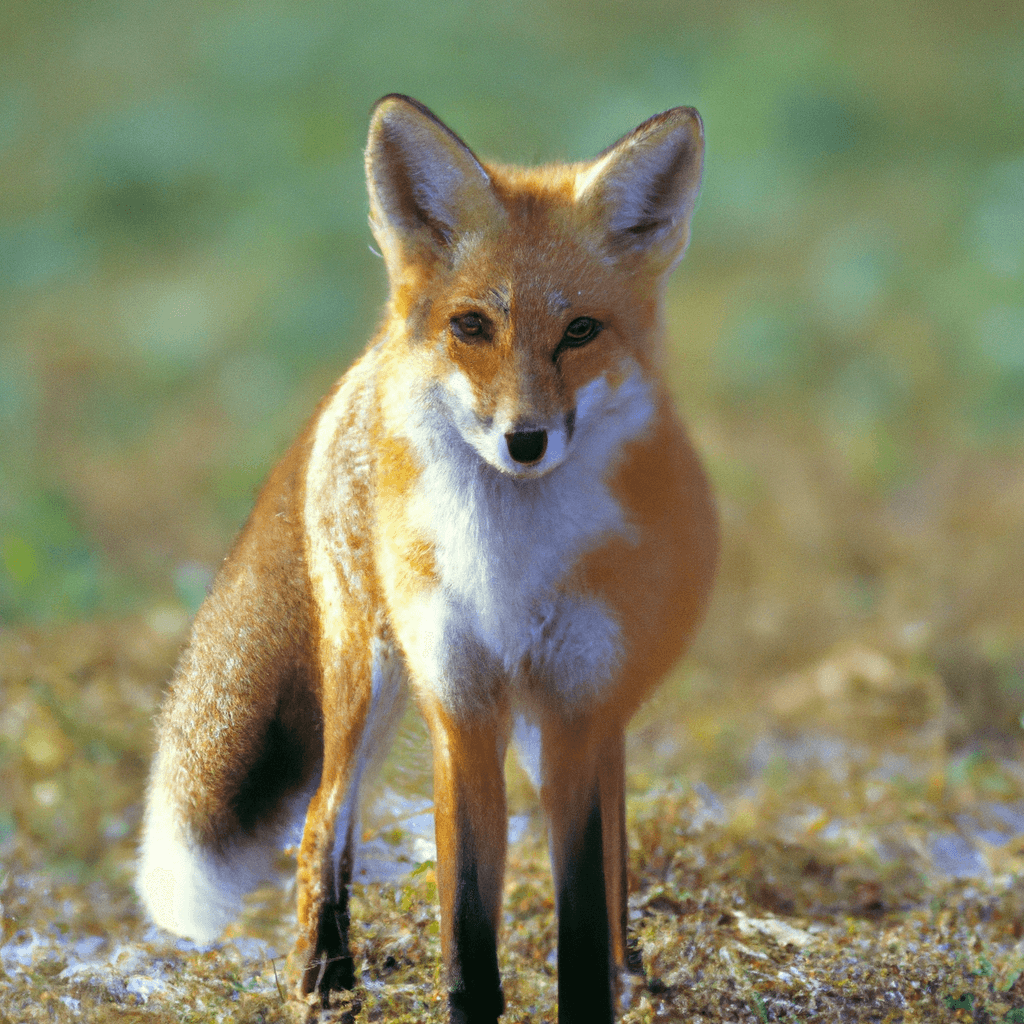like, Are foxes more cat or dog-like? This is a question that has been asked for centuries and is still debated today. Foxes are a unique species of mammal and have many characteristics that can be seen as either cat or dog-like. Foxes are incredibly intelligent and resourceful creatures, which can make them quite unusual compared to other animals.
They are also very social and adaptable, which means they can easily fit into both cat and dog households. In this article, we will explore the various characteristics of foxes and investigate if they are more cat or dog-like.
When it comes to taking care of your car, regular maintenance is key. It’s important to stay on top of things like oil changes, tire rotations, and brake inspections to keep your vehicle running smoothly. Not sure where to start? Here are a few tips that can help you stay on track with your car maintenance: 1. Read your owner’s manual. It’s a great source of information about your car and how to properly maintain it. 2. Keep up with oil changes. Regular oil changes are essential for keeping your engine running smoothly.
Make sure to check your manual for the proper frequency and type of oil to use. 3. Don’t ignore warning signs. If your car is making strange noises or you notice a sudden decrease in performance, take it into a mechanic right away. 4. Rotate your tires regularly. This helps to ensure even wear and extends the life of your tires. 5. Have your brakes inspected regularly.
Make sure to have your brakes inspected at least once a year to make sure they are performing properly. By taking the time to stay on top of regular maintenance, you can help ensure that your car is running smoothly and safely for years to come.
The Surprising Similarities between Foxes and Cats
Believe it or not, foxes and cats have a lot in common! From their anatomy to their behavior, these two animals are surprisingly similar. For starters, both foxes and cats have similar body shapes and sizes. Foxes have long and lean bodies, while cats have short and stocky frames.
Both creatures have four legs, sharp claws, and long tails. They also have similarly sized ears that help them hunt and navigate their environment. Another similarity between foxes and cats is their diet. Both animals are carnivores and rely on smaller animals, such as mice and birds, for their nutrition. They also both hunt using their sharp senses of smell and hearing. When it comes to behavior, cats, and foxes are quite similar as well.
Both animals can be seen out and about during the day, as well as at night. They both like to explore new environments and can often be seen lurking in the shadows. Finally, cats and foxes are both social creatures. While cats often form close bonds with their owners, foxes prefer to live in large groups of other foxes. Despite their solitary nature, they still enjoy playing and interacting with others. It’s amazing how much cats and foxes have in common! From their anatomy to their behavior, these two animals share many similarities. So next time you see a fox, remember that they’re not so different from your furry feline friend!
What Do We Really Know About the Fox’s Nature?
When it comes to the fox’s nature, there are still a lot of questions about this cunning and mysterious creature. We know that foxes are generally solitary animals that prefer to hunt alone and that they are expert hunters and scavengers. They typically live in dens and can often be found in wooded areas or near bodies of water. Foxes are also quite adaptable and can live in a variety of habitats.
Foxes are omnivores, meaning they eat both plants and animals. They will typically hunt small rodents, birds, and insects, but they are also known to eat fruit, berries, and other plant matter. Foxes are also nocturnal animals, meaning they are active primarily at night. In terms of behavior, foxes are quite curious and intelligent. They can be seen playing and exploring their environment, and they also communicate with each other using a variety of vocalizations.
Foxes also have a strong sense of family, and they will often stay with a mate for life. Despite our knowledge of foxes, there is still much to learn about these fascinating animals. By studying foxes in the wild, scientists are uncovering more about their behavior, diet, and habitat. The more we learn about foxes, the better we can understand and appreciate these clever and beautiful creatures.
A Closer Look at the Fox’s Eating Habits and Prey
The fox is an amazing animal, and its eating habits and prey are quite fascinating. Foxes are omnivores, meaning they eat both meat and plants. While they are mostly known for hunting animals such as rabbits and other small mammals, their diet can also include fruits, nuts, eggs, insects, and even scavenged carcasses. Foxes are opportunistic feeders, meaning they will take advantage of whatever food is available at any given time.
They are also quite resourceful hunters, often using their cunning and speed to outwit their prey. They will also use their sense of smell and hearing to locate their food. Foxes typically hunt during the night, when their prey is most active. During the day, they will sleep and rest in their dens. When they do hunt, they usually do so alone, but they may form small packs during the winter months.
Foxes have a wide variety of prey, including small mammals, birds, reptiles, and even fish. They also love to scavenge, and will often eat carrion and dead animals. They have even been known to eat garbage and pet food left outside. Foxes are also excellent at catching rodents and other small animals. They use their sharp teeth and claws to catch and kill their prey, and then use their front paws to hold and eat the food.
The fox is a truly amazing and resourceful creature, and its eating habits and prey are quite fascinating. They are incredibly adaptable and will take advantage of whatever food is available, making them a successful and important part of the food chain.
Interesting Facts About Foxes That Will Surprise You
1. Foxes are incredible climbers! They can climb trees, posts, and even fences. 2. Foxes are incredibly smart animals. They can learn to recognize different calls, remember animal paths, and even identify specific humans. 3. Foxes are incredibly fast! They can reach speeds of up to 30 miles per hour! 4. Foxes are incredibly social animals.
They live in large family groups, called “packs”, of up to 40 foxes and use various vocalizations to communicate with one another. 5. Foxes are incredibly resourceful! They can hunt, scavenge, and even steal food from other animals if necessary. 6. Foxes are incredibly sneaky! They have excellent camouflage and can even hide in plain sight. 7. Foxes are incredibly adaptable! They can live in a variety of climates and habitats, from the Arctic tundra to the savannas of Africa. 8. Foxes are incredibly vocal! They use a variety of sounds to communicate with one another, including barking, howling, and even purring! 9. Foxes are incredibly territorial.
They mark their territories with urine and feces, and they’ll fiercely defend their boundaries. 10. Foxes are incredibly cute! With their big ears and bushy tails, it’s no wonder why people love foxes!
How Do Foxes Compare to Other Animal Species?
Foxes are some of the most fascinating and misunderstood animals in the animal kingdom. While there are many similarities between foxes and other animal species, there are also some key differences that set them apart. One of the most obvious differences between foxes and other animals is their size. Foxes tend to be much smaller than many other species, typically weighing between six and nine pounds.
This makes them much more agile and able to quickly move around their environment. Foxes also have some unique adaptations that set them apart from other animals. For example, they have a special organ in their nose that helps them smell prey from hundreds of yards away. Additionally, they are one of the few mammals that can rotate their ears independently to better detect sound. Foxes also have a unique social structure compared to other animals. While most other species live in large groups, foxes live in small family units. This allows them to be more independent and reduces competition for resources.
Finally, foxes are also incredibly intelligent animals. They have been observed using tools to hunt for food and using their wits to outsmart predators. In many ways, foxes are like other animals in the animal kingdom, but they also have some unique characteristics that make them stand out. Their small size, unique adaptations, social structure, and intelligence make them some of the most fascinating creatures in the wild.
How Can We Tell If a Fox is More Cat or Dog?
It can be difficult to tell if a fox is more like a cat or a dog. Generally speaking, foxes are more like cats in terms of their behavior, but they can also display some dog-like qualities. Here are some ways to tell if a fox is more like a cat or a dog: 1. Appearance: Foxes tend to look more like cats than dogs, with their pointed ears and long, slender snouts. They also have more fur than dogs, which is usually more on the reddish side, similar to a cat’s fur. 2. Diet: Foxes have similar diets to cats, as they are both carnivorous and rely heavily on small prey.
Foxes also tend to eat more fruit and vegetables than dogs. 3. Social behavior: Foxes tend to be more independent than dogs and usually prefer to live alone or in small groups. They also tend to be more active during the night and are less likely to seek out human companionship than dogs. 4. Hunting habits: Foxes are more like cats in their hunting habits, as they will stalk and ambush their prey. Dogs, on the other hand, are more likely to chase their prey down and use their strength to overpower them.
Ultimately, foxes are more like cats than dogs in terms of their behavior and habits. However, they can still display some dog-like qualities, so it’s important to observe the individual fox to determine its personality.
The Unique Social Structure of Foxes
Foxes have a unique social structure that sets them apart from many other animals. A fox family usually consists of a mated pair, called a ‘reign’, and their offspring. The reign is led by the alpha male and the alpha female, who are the dominant pair in the group. The alpha pair is usually the only one in the group that breeds and produces cubs. The other members of the group are subordinate foxes. Even though they are not part of the alpha pair, they still play an important role in the group.
Subordinate foxes help with hunting, which benefits the entire group. They also help protect the cubs by alerting the alpha pair if any danger is approaching. Foxes also have a unique form of communication. They communicate through a variety of vocalizations and body language. For example, when two foxes meet, they communicate by making “scolding” noises, like a chattering or growling sound. This is a sign that they are friendly and not a threat to each other.
Foxes also use scent markings to communicate with each other. They rub their tails on objects to leave a scent that tells other foxes who they are and what territory they are claiming. This helps foxes to establish their hierarchy and keep others out of their territory. Foxes are unique in the way that they use their social structure to survive. Their complex communication skills help them to stay safe and to find food. This social structure gives them a competitive advantage over other animals, allowing them to thrive in the wild.
A Look at Foxes’ Hunting Strategies
Foxes are incredibly smart and clever hunters. They have developed several unique strategies to help them capture their prey. Let’s explore the different ways that foxes hunt in order to better understand these clever creatures. One of the most common hunting strategies used by foxes is ‘stalking’. This involves the fox slowly and quietly approaching its prey without being detected.
Foxes will often stalk their prey from a distance before making their move. They use their sharp senses to stay hidden and remain undetected until the perfect moment to pounce. Foxes also use a strategy called ‘ambush hunting’. This involves the fox waiting in a concealed spot for its prey to come along. When the prey gets close enough, the fox will quickly pounce and make the kill. Foxes also employ a strategy called ‘flushing’. This involves the fox making loud noises in order to scare its prey out of hiding.
The fox will then chase after the scared prey and make the kill. Finally, foxes will sometimes use a strategy called ‘scatter hoarding’. This involves the fox storing food in numerous small caches in order to prevent other animals from stealing them. The fox will then return to the caches when needed and eat the food. Foxes are incredibly smart and use several unique strategies to help them capture their prey. By understanding their hunting strategies, we can better appreciate these amazing animals.
What Does it Mean to be a Fox-Like Animal?
Being a fox-like animal means having similar characteristics to the fox, which is a member of the Canidae family. This includes having a slender body, pointed nose, long, bushy tail, and fur that is usually reddish-brown in color. Fox-like animals are also known for their intelligence and agility, which help them survive in the wild. They are usually quite swift and can run up to 30 miles per hour.
This makes them great hunters, as they can easily outrun smaller prey. Fox-like animals also have great hearing and a keen sense of smell, making them very good at tracking their prey. Fox-like animals are also known for their cunning and resourcefulness. They have been known to adapt to difficult environments, find clever ways to get food, and even outsmart predators. Of course, not all fox-like animals are the same – there are many different species, each with its own unique characteristics.
But all of them share the traits of intelligence, agility, and resourcefulness, making them some of the most fascinating creatures in the animal kingdom.
1How Do Foxes Communicate with Each Other?
Foxes communicate with each other using a variety of different vocalizations as well as body language. They can make loud barks, whines, and growls. In addition to these vocalizations, foxes also use a range of facial expressions and body postures to communicate with one another.
For example, they may use the position of their ears, tails, and eyes to indicate different messages. They may also use scent-marking to mark their territory and communicate with other foxes.
like Foxes have characteristics of both cats and dogs, and therefore can be considered to have a personality that is a blend of both. They are intelligent, social animals who can be trained and can form strong bonds with their owners. They are also independent and have wild spirits. Ultimately, foxes are more like cats and dogs in the way they behave and interact with humans, making them unique and special creatures.




